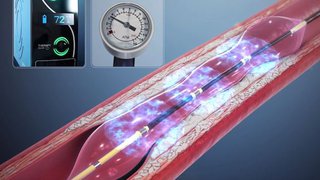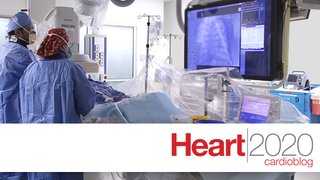Accurate Imaging for Improved Treatment
Angiography is a special X-ray exam of the blood vessels that allows doctors to see how blood circulates through the body. A contrast medium, or dye, is delivered to an area of the body to be evaluated. An X-ray camera captures images, called angiograms, of the dye's path as it travels through the blood vessels. These images show when the dye flows smoothly and when it gets held up, indicating a blockage in the blood vessel.
Angiography is very accurate and provides important information that isn’t available through other imaging techniques.
UT Southwestern specialists are highly trained and experienced in conducting and evaluating angiograms. Our services include advanced imaging tools and minimally invasive techniques, many of which are not available at other medical facilities.
Conditions We Treat with Angiography
Angiography is most effective in diagnosing conditions in the following areas:
- Heart: Detecting defects, narrowing or blockage of blood vessels, and overall health
- Brain: Detecting aneurysms, tumors, or narrowing or blockage of blood vessels
- Lungs: Evaluating blockage of blood vessels and assessing lung circulation prior to surgery
- Kidneys: Detecting tumors, cysts, clots, inflammation, narrowing of blood vessels,and other problems
- Abdomen: Detecting tumors and blood vessel damage, and locating the source of internal bleeding
- Arms and legs: Checking blood flow after surgery, as well as detecting and evaluating blood clots or narrowing of the blood vessels
- Lymph nodes: Diagnosing cancer or evaluating the results of cancer treatments
- Eyes: Detecting diseases of the retina and diagnosing eye problems in patients with diabetes
Angiography: What to Expect
Before an angiography, our doctors might schedule a pre-test appointment to perform a physical exam and do some blood tests. Be sure to take this opportunity to ask any questions about the procedure.
Patients might be asked to avoid eating or drinking anything for a certain period of time before the angiography. Please arrange for someone to drive the patient home after the procedure.
When the patient arrives on the day of the appointment, he or she will be asked to change into a gown and remove items that might interfere with the X-ray, such as:
The patient might be allowed to wear glasses or hearing aids, but please ask the radiology technologist if these items will interfere with the procedure.
Traditional Angiography
Our technologist will help the patient onto a scanning table. The patient will receive an IV in the arm and might receive light sedation or other medication. The top of the leg, or another insertion site, will be shaved and cleaned. Local anesthesia will be applied to the injection site, and the catheter will be gently inserted and guided into the blood vessel. Most patients feel only pressure but no pain at this point. Patients will not feel the catheter inside the body.
Next, the contrast medium, or dye, will be injected into the catheter. The patient might feel a warm sensation or some mild discomfort, but it will pass quickly.
During the procedure, it is important that the patient lie still. The X-ray camera overhead will make snapshots of the dye moving through the blood vessels. After all the X-rays are taken, the catheter will be removed. Pressure will be applied to the insertion site for several minutes to prevent bleeding.
When the procedure is completed, the patient will rest in bed for several hours. Some people are able to return home the same day, but some remain overnight to ensure proper healing of the insertion site. Our doctor will ask the patient to lie still and avoid moving the leg or arm where the catheter was inserted. A nurse will check the patient’s blood pressure and pulse throughout the day.
If necessary, the patient can take a pain reliever. He or she will be encouraged to drink plenty of water to help the body flush the contrast medium.
Digital Subtraction Angiography
A less-invasive form of the procedure described above is called DSA, or digital subtraction angiography. This exam calls for a series of X-rays before any contrast medium is injected. Then, the patient receives several injections with small amounts of contrast medium as the X-ray machine continuously takes pictures. The computer then compares the images with and without contrast medium.
After the Procedure
Most people can resume normal activity the following day, but it is important to take it easy and give the body some time to heal. Our doctors’ recommendations include:
- Avoid driving, using alcohol, or participating in strenuous activities the first 24 hours after the procedure.
- Refrain from lifting or straining for at least a week.
- Check the insertion site for any problems, such as an increase in pain or swelling, redness, drainage, or numbness and tingling in the arm or leg.
The radiologist will review the images and send a report to the doctor, who will notify the patient of any findings.
Risks of Angiography
It is important to note that while angiography is a very accurate, beneficial exam and complications are rare, it does involve possible risks, such as:
- Allergic reaction to the contrast medium
- Infection at the injection site
- Damage to blood vessels that can lead to heart attack, stroke, or other problems
Our doctors will discuss these risks with patients before an exam.
Our radiologists can answer any questions patients might have about a health condition, including pregnancy, that could affect the exam.







